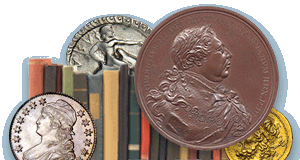
PREV ARTICLE
NEXT ARTICLE
FULL ISSUE
PREV FULL ISSUE
THE COSTS OF COLLECTINGGerry Tebben writes: "Here's an interesting story in the Wall Street Journal about the costs and hazards of collecting. Beth Deisher is quoted at the end about the perils of counterfeits." Thanks. Here's an excerpt. -Editor
Yet for collectors who can withstand the lack of liquidity and take steps to preserve value, these can be good alternative investments that aren't correlated with more-traditional markets, says Robert Rosenthal, chairman and chief executive of First Long Island Investors, who collects art with his wife, Jodi Rosenthal. Here's a closer look at some of those lesser-discussed issues:
The costs of care Light and temperature fluctuations are notorious for causing damage to holdings. Paintings, for instance, may require special glass, while fragile items such as textiles and sneakers need temperature-controlled storage. At-home safes can protect items such as baseball cards, rare coins and antique guns, but they need to be bolted down to prevent theft. What's more, if you choose a home safe to store your collection you should look for one that is fire-resistant. "The care of each of those collections is very important to the ultimate value, and you can really compromise the value of these collectibles if not properly stored," Rosenthal says.
Inventory and insurance Keeping good records such as sales receipts and appraisals matter to establish a cost basis. This can affect valuations and potential taxes if the person sells or bequeaths a collection, says Steve Lockshin, co-founder of Vanilla, an estate-planning software firm.
Fakes and frauds For example, as precious-metals prices rise, it has attracted new collectors who may not be on the lookout for counterfeit gold and silver coins, says Beth Deisher, executive director of the Anti-Counterfeiting Educational Foundation. Scammers not only create sophisticated websites to fool consumers into purchasing fakes, but new technology can also produce harder-to-detect fake coins.
To read the complete article (subscription required), see:
Wayne Homren, Editor The Numismatic Bibliomania Society is a non-profit organization promoting numismatic literature. See our web site at coinbooks.org. To submit items for publication in The E-Sylum, write to the Editor at this address: whomren@gmail.com To subscribe go to: Subscribe All Rights Reserved. NBS Home Page Contact the NBS webmaster 
|
